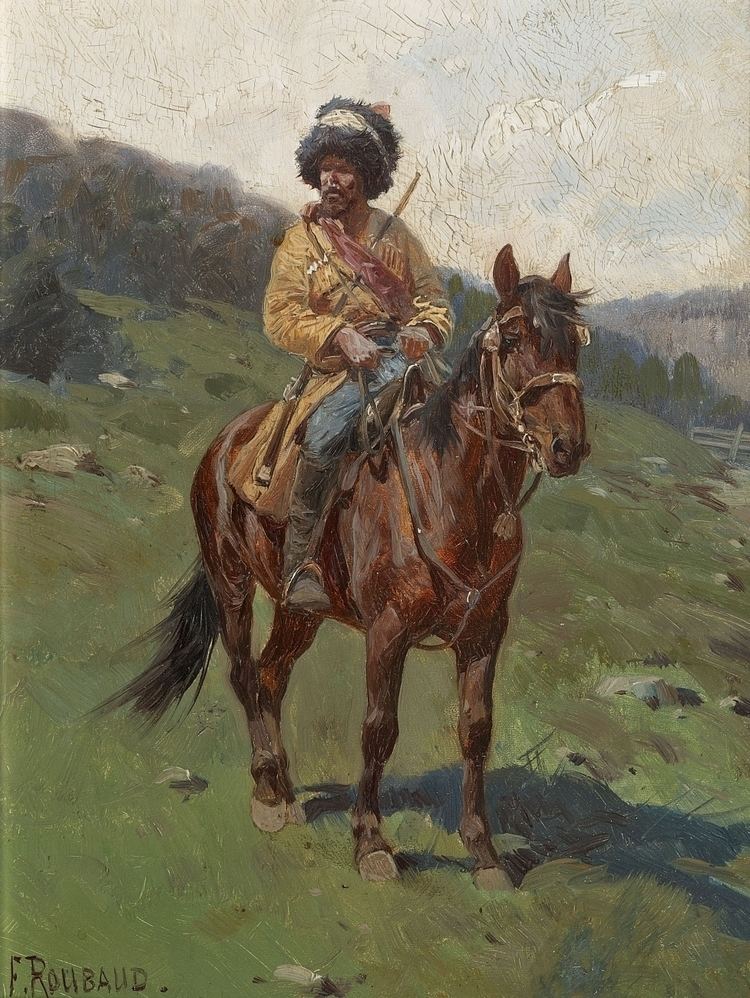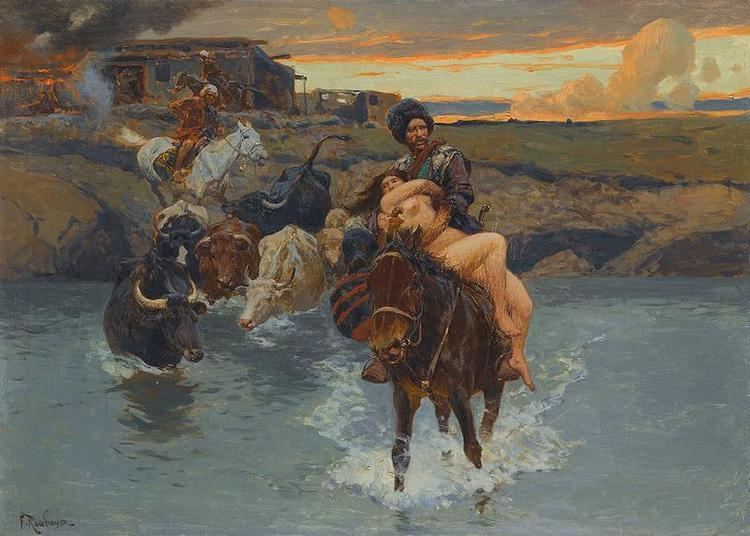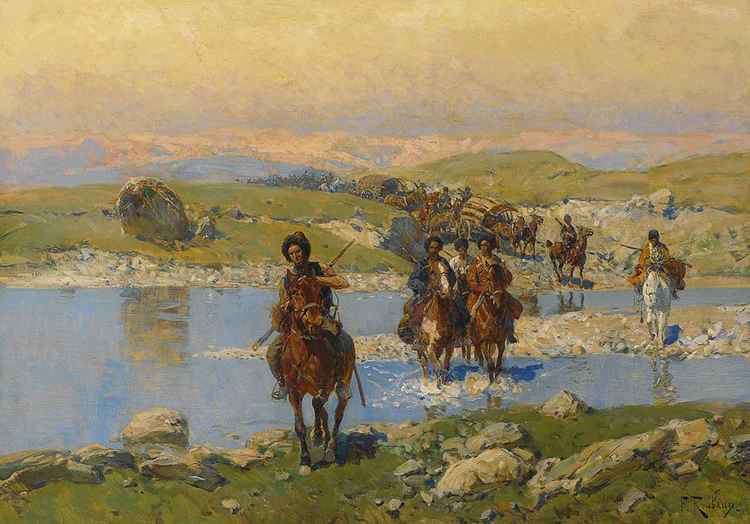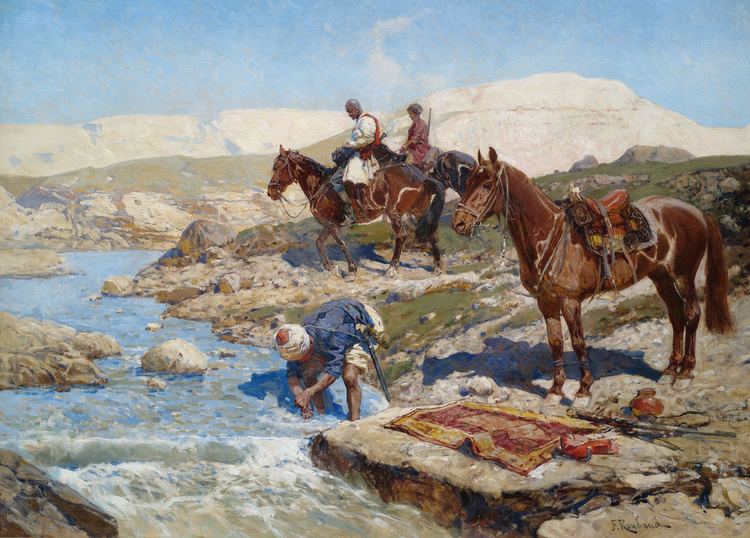Nationality Russian Notable work panoramic painting | Name Franz Roubaud | |
 | ||
Full Name Franz Alekseyevich Roubaud Similar People Pavel Nakhimov, Vladimir Istomin, Alexander II of Russia, Nicholas I of Russia, Alexander Sergeyevich Menshikov | ||
Siege of Sevastopol (panorama)
Franz Alekseyevich Roubaud (Франц Алексеевич Рубо) was a Russian painter who created some of the largest and best known panoramic paintings. He created circular paintings, exposed on a cylindrical surface and viewed from the inside. In this way, the viewers were given an outlook point from a high place, the painting was reproducing the original scene with high fidelity.
Contents

Biography

Franz (François) Roubaud was born on 3/15 June 1856 in Odessa to Honoré Fortuné Alexis Roubaud and his wife Madelaine née Sénèque. Franz was the fourth of five children in a Catholic family; his father was a bookseller and stationer, originally from Marseille. He studied at the Odessa Drawing School. In 1877 Roubaud went to Munich and studied at the Munich Academy of Fine Arts.

He then settled in Saint Petersburg, working in the Imperial Academy of Arts and painting huge panoramas of historical battles. In 1904-12 Roubaud taught at the St. Petersburg Academy of Arts as a professor. During this time he painted the Siege of Sevastopol, a panorama painting. In the mid-19th century, the various panoramic paintings became a fashionable way to depict landscapes and historical events. The panorama was a 360-degree visual medium patented by the artist Robert Barker in 1787. This was a new thing for the time and for the audiences in Europe of this period theses paintings were a sensation. The paintings created a new illusion, transporting the viewer into a virtual reality, creating the perception of being physically present in the middle of the events. When standing in the middle of the 360 degree panorama this created the impression of standing in a new environment.

He became renowned thanks to the giant panorama paintings he executed during his lifetime. Roubaud's works were so large that they required specially built pavilions to exhibit them. These paintings are one of the few panoramas still extant of a popular 19th century genre. The viewer stands in the centre of the circular panorama, and observes the various scenes whilst walking around and observing the panorama from different viewing angles.

In 1913 Roubaud left Russia for Germany, settling in Munich, where he lived for the rest of his life. He died on 13 March 1928.
List of works
Sevastopol Panorama
The Sevastopol Panorama is a giant painting depicting the siege of Sevastopol. The painting was exhibited in a rotunda, a specially built house in a circular form. The size of the painting is enormous, but it was a necessity for the realistic depiction of military scenes because of the huge number of participants and the wide sweep of the scenery. Franz Roubaud worked on this painting for almost three years, starting in 1901. He researched the historical events by traveling to Sevastopol, reading about the battle and the historical documents that described the different scenes and incidents during the war. He also talked to surviving participants. Roubaud made his first sketches in Saint Petersburg. He kept working on the painting later at the Bavarian Academy of Fine Arts where he decided to use a canvas of the size 14 m by 115 m. When he finished the painting it was displayed in Sevastopol in the summer of 1904, at the fiftieth anniversary of the defence of the city.
